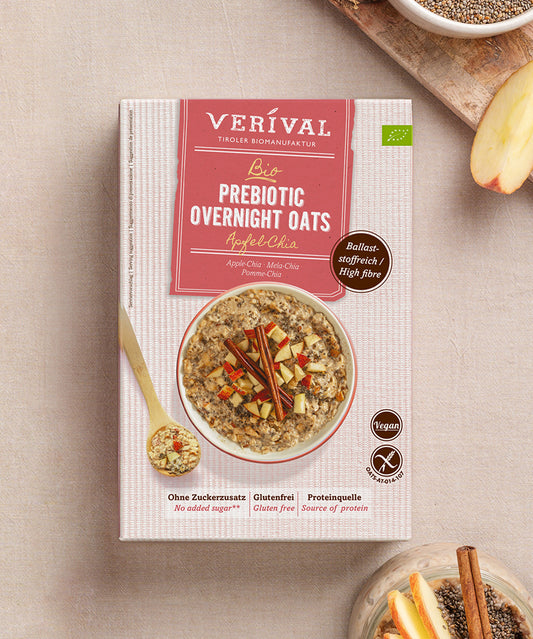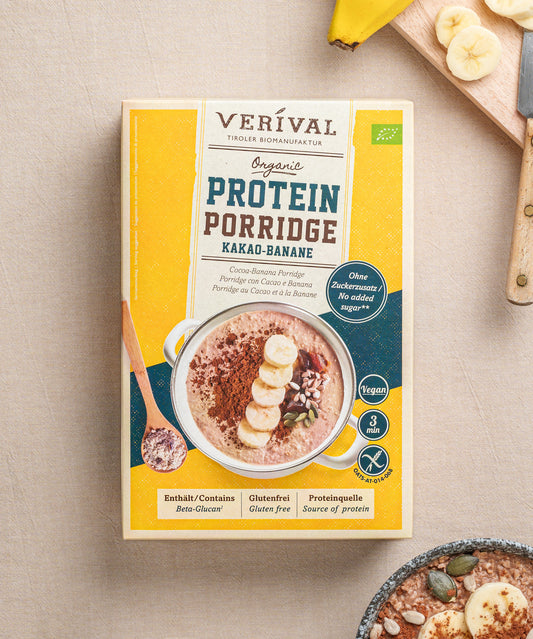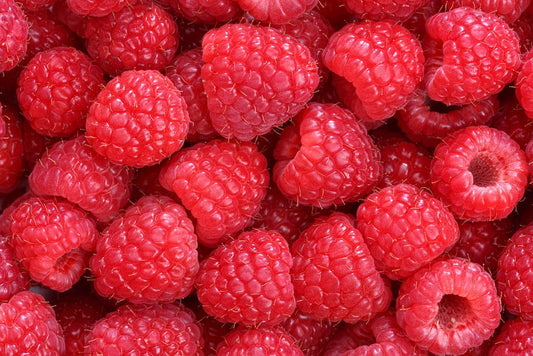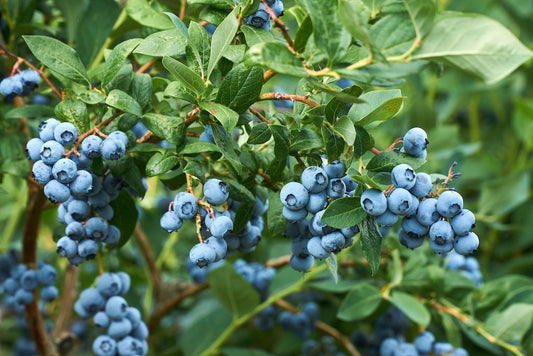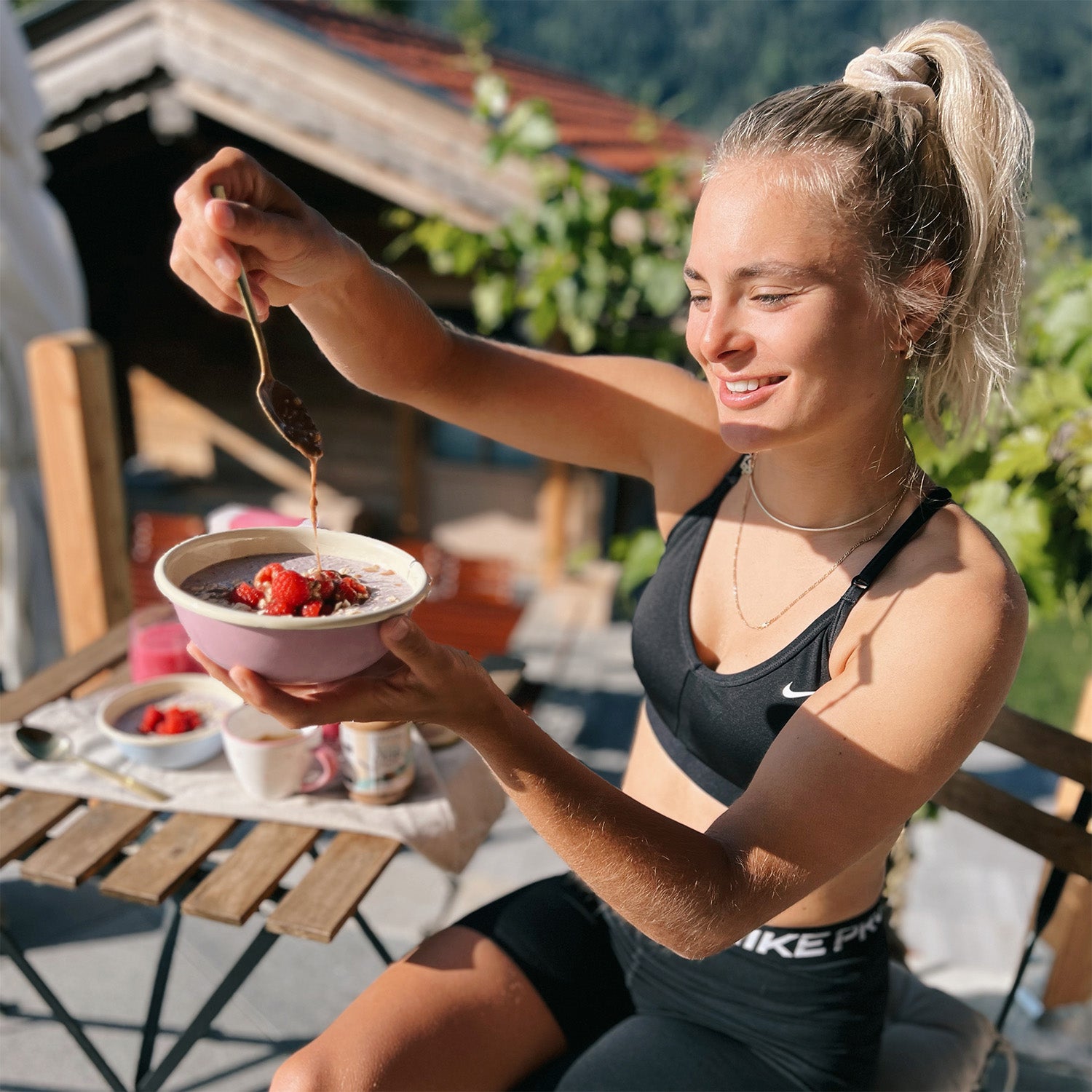If you spend a little time learning about Ayurveda, you will inevitably come across the three Ayurvedic types (doshas) Vata, Pitta and Kapha. The so-called doshas are understood to be the three life energies that are present in every organism. Each of them is responsible for certain bodily functions.
In addition, the expression of the three doshas in us indicates what constitutional type we are. Are you more of the grounded Kapha type, fiery like Pitta or flexible like Vata? Depending on the expression, you can adapt your daily routine and eating habits so that your doshas are in balance and you feel completely comfortable.
For example, warm breakfasts are better than cold ones according to Ayurvedic nutrition. This applies above all to Kapha and Vata types.
Find out more about the three doshas and discover what type you are:
The three doshas – what's behind them!
When we talk about Ayurvedic types, we actually mean the proportion of the three life energies Kapha, Pitta and Vata. In fact, each of us has all three within us. However, in most people, one dosha is usually more pronounced than the others.
For example, if you are a Pitta type, this means that your Pitta dosha is more pronounced than Vata and Kapha.
Sometimes it also happens that two doshas are equally pronounced. These people are called mixed types. Less common are so-called tri-doshas. This is when all three life energies are equally present.
To find out which Ayurvedic type you are, dosha tests on the internet can be helpful. However, an exact determination is only possible through a visit to an Ayurvedic practitioner.
But perhaps you already recognize yourself in our descriptions of the individual constitutional types:
Kapha – the epitome of calm
The elements of earth and water are attributed to the Kapha dosha. This life energy is responsible for the structure of our body and for maintaining the right balance of body fluids.
Kapha types are characterized by their calm, grounded and loyal nature. It seems as if nothing can throw them off balance.
They also have an excellent memory and remember every little thing they have ever learned. In their daily lives, these types like routine and find it easy to maintain.
These Ayurveda types have problems with their habit of clinging to things and people. They also tend to overeat and oversleep. However, lack of movement is common for this constitution type.
An excess of Kapha often manifests itself in the form of obesity or illnesses such as asthma, depression and diabetes. In everyday life, an excess of Kapha is characterized by listlessness, fatigue and sluggishness.
Tips for Kapha types
To counteract sluggishness, regular exercise is essential for Kapha types. It is also important to strengthen the digestive fire. This can be achieved, for example, with hot ginger water or spices such as turmeric and chili. Incidentally, turmeric is one of the classic Ayurvedic spices.
In addition, these Ayurveda types should prefer warm meals to cold ones. So in the morning, you can enjoy warm porridge to fuel the digestive fire.
If you have never made porridge yourself, you can try our basic porridge recipe:
Kapha-dominated people should integrate movement into their routine, avoid afternoon naps and occasionally embark on adventurous and new situations. This helps to keep the life energy in balance and prevent an excess.
Pitta – the hotheads
The element fire is attributed to the Pitta life energy, as well as a small amount of water.
Pitta is responsible for the metabolic processes in our body and regulates the hormone balance as well as the body temperature.
People in whom this dosha predominates work in a very structured manner and can concentrate well. They are practical and logical thinkers.
However, the fiery Pitta type also tends towards outbursts of rage, especially when hungry. It is rather difficult for them to relax and they often suffer from problems falling asleep.
An excess of Pitta energy can lead to inflammation and high blood pressure in the body. Typical illnesses are skin diseases such as acne or stomach and intestinal ulcers.
Tips for Pitta types
Ayurveda Pittas should avoid extreme situations. Although these people need exercise as a counterbalance, they should avoid overexertion.
People with a Pitta constitution should stay away from heat. This also applies to spices. They should avoid spicy foods.
Dear Pitta types, now you have to be strong, because you should only consume stimulating drinks like coffee, tea or energy drinks in small quantities or preferably not at all.
In everyday life, Pitta types should stay in a cool and well-ventilated environment. It is also particularly important for them to express their feelings.
Vata – the enthusiasts
The dosha Vata controls our energy and is responsible for our nervous system.
Vata is associated with the elements air and space/ether. This lightness is also reflected in the character of Vata types.
They are considered creative and enthusiastic, like to try new things and are very open-minded personalities. They also like to move and are very active.
However, their spontaneity sometimes causes them to act without thinking and rashly. Their forgetfulness also occasionally bothers them and those around them.
If the Vata type loses his balance, he tends to become nervous and anxious. This is why he also often suffers from sleep disorders. Typical illnesses associated with an excess of Vata are arthritis and joint complaints.
Tips for Vata types
People with a Vata constitution tend to forget to eat and simply skip meals. In their daily lives, they should therefore make sure to eat regularly and well. Peace and quiet is also particularly important for this type.
As they tend to have digestive problems, regular and preferably warm meals are essential for Vata types.






